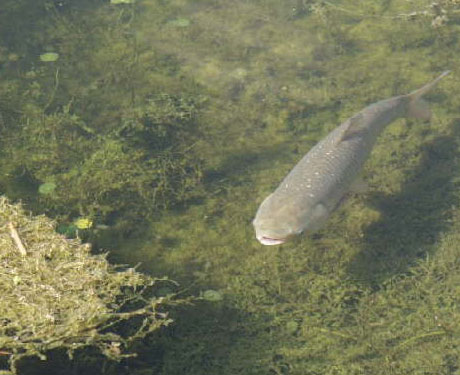The Great Lakes, a vital freshwater resource, are under ecological threat from a series of invasive species. These non-native organisms disrupt the lakes' natural ecosystems, leading to significant environmental, economic, and recreational consequences. Let's dive into some of the most notorious invasive species, their origins, impacts, and what's being done to control their spread.
Zebra Mussels (Dreissena polymorpha)
_0265_(39449820624).jpg?width=448&height=273&name=Dreissena_polymorpha_(I1957)_0265_(39449820624).jpg)
Origin: Originally from the lakes of southern Russia, zebra mussels were transported to the Great Lakes in the 1980s via ballast water from ocean-going ships.
Impact: They filter out algae that native species need for food and attach to—and incapacitate—native mussels. Their colonization on infrastructure causes significant maintenance challenges.
Control Efforts: Management strategies include chemical treatments and manual removal. Research continues to find effective long-term solutions.
Sea Lamprey (Petromyzon marinus)

Origin: Native to the Atlantic Ocean, sea lampreys entered the Great Lakes through shipping canals.
Impact: As parasitic feeders, they attach to fish like lake trout, often leading to the host's death, severely impacting commercial fisheries.
Control Efforts: The Great Lakes Fishery Commission has implemented measures like lampricides and barrier systems to control sea lamprey populations.
Asian Carp (Bighead, Silver, Grass, and Black Carp)

Origin: Asian carp were imported to the southern United States to manage algae in aquaculture and wastewater treatment facilities but escaped into the Mississippi River basin and now threaten to enter the Great Lakes.
Impact: They compete with native fish for food, potentially leading to their decline and altering the aquatic food web.
Control Efforts: Physical barriers and electric fences are being evaluated and used to prevent their spread into the Great Lakes.
Eurasian Watermilfoil (Myriophyllum spicatum)
.png?width=449&height=315&name=Myriophyllum_spicatum_(Eurasian_watermilfoil).png)
Origin: This plant is native to Europe, Asia, and North Africa and spread to North America in the mid-20th century.
Impact: It forms dense mats that interfere with aquatic recreation, crowd out native plants, and create habitats for mosquitoes.
Control Efforts: Management includes mechanical harvesting, herbicidal treatment, and the introduction of milfoil weevils as biological control agents.
Round Goby (Neogobius melanostomus)

Origin: The round goby is native to the Black and Caspian seas and arrived in the Great Lakes in the 1990s, likely through ballast water.
Impact: This aggressive fish species preys on native fish eggs and outcompetes native species for habitat.
Control Efforts: Efforts focus on preventing the spread and educating anglers not to use gobies as bait.
Purple Loosestrife (Lythrum salicaria)

Origin: Purple loosestrife is native to Europe and Asia and was introduced to the Great Lakes region in the 1800s as an ornamental plant.
Impact: It overtakes wetlands, displacing native vegetation, reducing habitat for waterfowl, and altering hydrological patterns.
Control Efforts: Control methods include manual removal, herbicides, and the release of specific insects that feed on purple loosestrife.
Rusty Crayfish (Orconectes rusticus)
_-_Guelph%2c_Ontario_2020-04-08_(06).jpg?width=582&height=388&name=Rusty_Crayfish_(Faxonius_rusticus)_-_Guelph%2c_Ontario_2020-04-08_(06).jpg)
Origin: The rusty crayfish, native to the Ohio River Basin, was likely introduced into the Great Lakes through bait bucket release.
Impact: It competes with native crayfish species for food and habitat and can reduce aquatic plant diversity and abundance.
Control Efforts: Measures include trapping and regulations on the use and transport of crayfish as bait.
Addressing the Invasive Species Challenge
Efforts to combat the spread of invasive species in the Great Lakes are multifaceted, involving regulatory approaches, research, public education, and active management. Organizations such as the Great Lakes Invasive Species Information Network (GLANSIS) and the Great Lakes Restoration Initiative are at the forefront of these efforts, providing resources and support for invasive species control. Individuals are encouraged to participate by reporting sightings to local authorities, following state guidelines to prevent the spread, and supporting conservation initiatives.
Your Role in the Great Lakes' Future
The preservation of the Great Lakes' ecosystems requires vigilance and action from all who benefit from these waters. By staying informed, practicing responsible recreation, and supporting policies that protect these waters, we can help maintain the health and beauty of the Great Lakes for generations to come.
For more information and resources on invasive species in the Great Lakes and what you can do to help, visit the Great Lakes Fishery Commission or the United States Geological Survey's Nonindigenous Aquatic Species database.